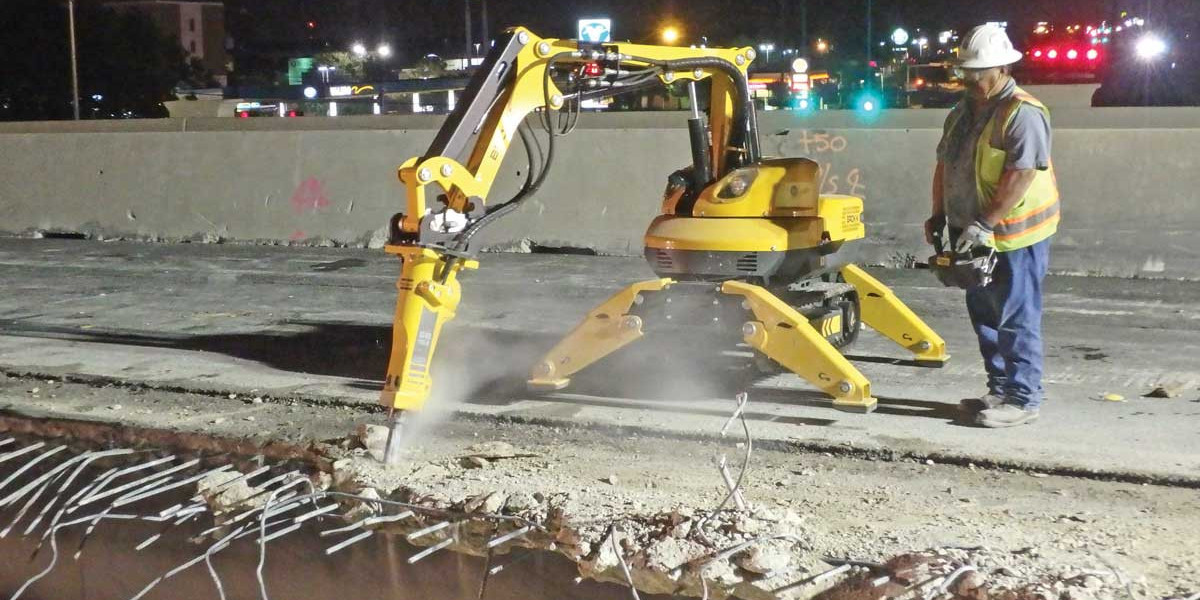Concrete demolition projects can be complex and require thorough planning to ensure efficiency, safety, and cost-effectiveness. Whether you’re tearing down a small concrete structure or undertaking a larger-scale demolition, a well-thought-out plan is essential for a smooth process. Proper planning not only minimizes risks but also ensures that the project is completed on time and within budget. In this article, we’ll explore the key tips that will help you plan and execute a successful concrete demolition project.
The Importance of Proper Planning
When embarking on a concrete demolition project, the first step is to understand that proper planning is crucial. Demolition involves many factors, from assessing the scope and choosing the right demolition method to ensuring safety and waste management. Without a clear plan, you risk encountering delays, unexpected costs, and even safety hazards. By taking the time to carefully assess each aspect of the project beforehand, you can mitigate these risks and achieve a smooth, efficient demolition process.
Key Tips for Successful Concrete Demolition
1. Assess the Scope of the Project
Before starting any demolition work, assess the scope of the project. Determine the size of the structure, its location, and any challenges that may arise. Consider the concrete’s thickness, reinforcement, and the layout of the site. For example, demolishing a small patio or driveway requires different tools and methods compared to demolishing an entire building. Additionally, check for any potential hazards such as utilities, underground structures, or asbestos, as these can impact the scope of work.
2. Understand the Necessary Equipment
The equipment required for concrete demolition depends on the size and complexity of the project. Common tools include:
- Jackhammers: Useful for breaking up smaller areas of concrete.
- Concrete Saws: Ideal for cutting through thicker concrete or precision work.
- Excavators or Skid Steers: Essential for larger demolitions, especially when working with larger structures.
- Crushers and Pulverizers: For reducing concrete to smaller pieces for disposal or reuse.
Make sure you choose the right equipment for the job to avoid delays and complications. Renting or purchasing equipment should also be factored into the budget.
3. Choose the Right Demolition Method
Choosing the right demolition method is one of the most important decisions in the planning process. There are two primary methods to consider:
Manual Demolition: This method is best for smaller projects or when precision is required. Manual demolition involves using tools like sledgehammers, jackhammers, and other hand tools to break up the concrete. While labor-intensive, it offers more control and can be safer in confined spaces.
Mechanical Demolition: For larger projects, mechanical demolition is often more efficient. This method utilizes heavy machinery such as excavators, bulldozers, and hydraulic breakers to demolish the concrete quickly. It’s important to consider the availability of such equipment and the experience required to operate them safely.
4. Implement Safety Precautions
Concrete demolition is a dangerous job, and safety should always be the top priority. Ensure that all workers are equipped with the necessary personal protective equipment (PPE), including hard hats, safety goggles, gloves, and steel-toed boots. You should also ensure that the demolition area is cordoned off to prevent unauthorized access. If you're working with heavy machinery, operators should be properly trained, and safety protocols should be followed at all times. Additionally, take care to address any potential hazards such as flying debris or unstable structures.
5. Obtain Necessary Permits
Before you begin any demolition project, check with your local authorities to determine whether you need any permits. Permits are often required for demolition work, especially in urban areas or for larger-scale projects. Obtaining the necessary permits ensures that your demolition complies with local building codes and regulations. It also protects you from potential fines or legal complications. Be sure to inquire about any specific requirements regarding environmental protection, hazardous materials, or noise levels during the demolition process.
6. Manage Waste Disposal
Demolition work generates a significant amount of waste, and proper disposal is essential. Depending on the size of the project, concrete waste can accumulate quickly, so planning for waste management is critical. Research local disposal regulations and find out if you can recycle the concrete or if it must be hauled to a landfill. Many companies offer concrete recycling services, where the material is crushed and repurposed for other construction projects. By recycling, you not only reduce the environmental impact but can also lower disposal costs.
7. Working with Professionals vs. DIY
While DIY concrete demolition might seem like a cost-effective option, it’s often best to hire professionals for larger or more complex projects. Professional demolition contractors have the experience, equipment, and expertise to safely and efficiently handle the job. They can also help ensure compliance with local regulations and permit requirements. For smaller, less complicated projects, DIY demolition can work if you have the right tools and follow safety protocols. However, always weigh the potential risks and the time investment before deciding.
8. Stay Within Budget
Concrete demolition can be expensive, especially when you factor in the cost of permits, equipment, labor, and waste disposal. To stay within budget, create a detailed plan and get quotes from contractors or rental equipment companies ahead of time. Be sure to account for any unexpected costs, such as the need for additional labor or specialized equipment. Having a clear budget in place will help ensure that the project doesn’t exceed your financial limits.
Conclusion: The Benefits of Thorough Planning
Thorough planning is essential for a successful concrete demolition project. By assessing the scope of work, choosing the right demolition method, ensuring safety, obtaining permits, managing waste disposal, and working within your budget, you can avoid common pitfalls and ensure that the project proceeds smoothly. Proper planning not only reduces risks but also leads to a more efficient and cost-effective process. By taking the time to plan, you can minimize disruptions, reduce costs, and achieve a successful demolition that meets your goals.








